Uninstall Mirai virus (Improved Removal Guide) - Instructions
Mirai virus Removal Guide
Description of Mirai virus
Mirai virus maintains its cyber terror
Mirai virus, meaning the ‘the future’ in the Japanese language, was first discovered in April 2016 when a group of malware researchers has revealed a major discovery of enormous ‘botnet’ – the network of infected machines which are infected with one specific programming code. Since them, the malware has occasionally made into the spotlight by paralysing several dozens of IoT devices. One of the peculiar preference of this threat – it targets exclusively Linux operating systems and IoT devices. Since then, the virus has multiplied into several dozens of infections which are classified into several botnets. The tracks lead to different countries: the US, Brazil, China, etc. One of the latest targets – German telecommunications company ‘Deutche Telecom.’ Even if you are a Windows or Mac OS user, do not let the idea that you are safe from this infection, take over your mind. Get acquainted with Mirai removal and prevention methods.
The credits for developing such massive virtual threat belong to the Internet user called ‘Anna-senpai.’ This user, who supposedly is a fan of the Japanese pop-culture, has remained a mysterious figure in the cyber space. However, an IT expert, Brian Krebs have found interesting evidence which leads to Paras Jha, a prodigy and the president of ProTraf Solutions. Nonetheless, the traces of Mirai botnets have been detected globally. One of the recent versions of this malware Mirai (Linux.Gafgyt.B) has been detected in Brazil.
The original version of Mirai virus mainly targets IoT devices and surveillance devices. In October 2016, it hit one of the biggest DNS providers, Dyn and its customers. It resulted in paralysed Twitter, Reddit, and Spotify accounts. It is suspected that the attack of such magnitude was launched by 10 million corrupted devices. In the same month, a Chinese electronics manufacturer reported hacked DVRs, cameras, and other devices.
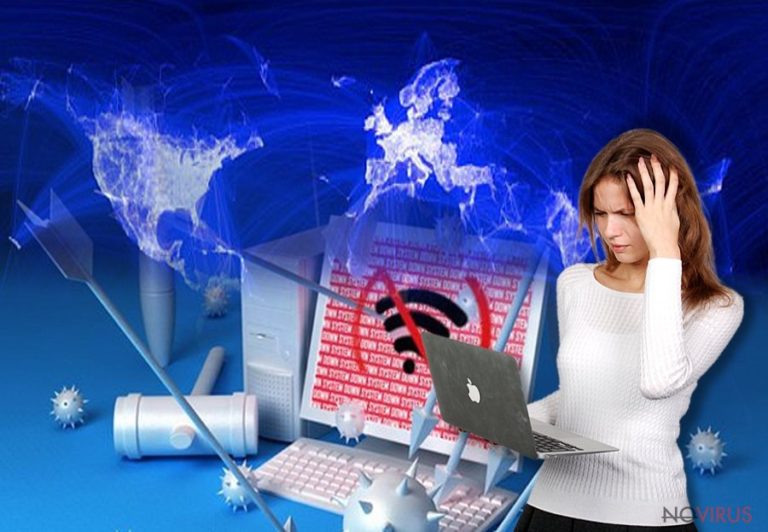
The attack also reverberated in Europe. In November 2016, about 1 million clients of ‘Deutsche Telecom’ reported having no Internet connection. Virus analysts suspect that the crooks have mishandled the attack: their original purpose was to steal users’ personal data. Regarding this incidents, the malware remains to be one of the biggest and most destructive virtual menaces. Several dozens of Mirai botnets all over the world makes the matters even more complicated. On the other hand, there are still countermeasures and means to remove Mirai virus.
Is there a way to prevent the malware?
Since Mirai virus targets IoT devices and Linux operating systems, you should concentrate on the protection of these systems. Before acquiring a new IoT device, get acquainted with its manual and manufacturer. Change default passwords. You might also alter the present encryption system for the Wi-Fi network to a more elaborate one. Opt from Telnet login to SSH. Once the latest software updates for the device are issued, install them right away. Such advice is applicable for Linux OS users as well.
Mirai termination
Since Mirai remains to be one of the formidable virtual infections, proper protection and vigilance are of utmost importance. Bear in mind that Windows or Mac OS-adapted versions might appear in the cyber space as well. Regarding these systems, FortectIntego or Malwarebytes serve as malware elimination options. They are able to locate the source of infection and terminate all components. Update them regularly. If this menace occupies your device, use the below instructions to regain the full control of the device and then remove Mirai virus.
Getting rid of Mirai virus. Follow these steps
In-depth guide for the Mirai elimination
If you have doubts that Mirai or the threat of similar origin has occupied the computer, turn on the computer in Safe Mode and launch the malware elimination tool.
Important! →
The elimination guide can appear too difficult if you are not tech-savvy. It requires some knowledge of computer processes since it includes system changes that need to be performed correctly. You need to take steps carefully and follow the guide avoiding any issues created due to improper setting changes. Automatic methods might suit you better if you find the guide too difficult.
Step 1. Launch Safe Mode with Networking
Safe Mode environment offers better results of manual virus removal
Windows 7 / Vista / XP
- Go to Start.
- Choose Shutdown, then Restart, and OK.
- When your computer boots, start pressing the F8 button (if that does not work, try F2, F12, Del, etc. – it all depends on your motherboard model) a few times until you see the Advanced Boot Options window.
- Select Safe Mode with Networking from the list.
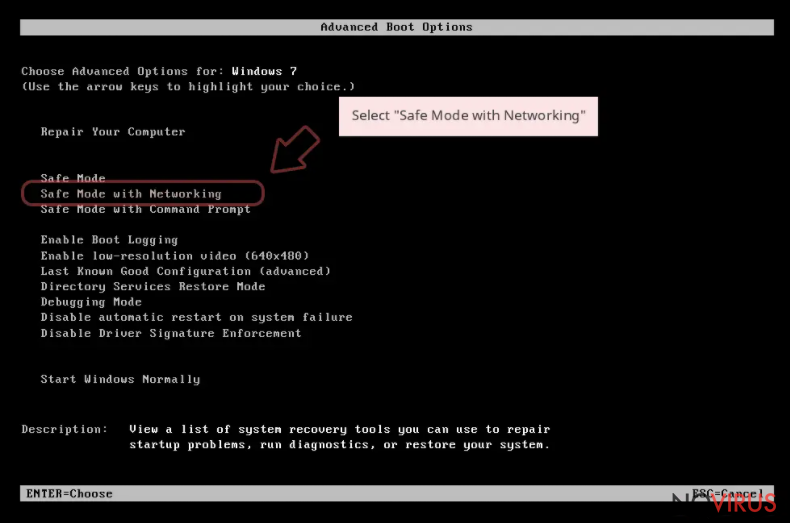
Windows 10 / Windows 8
- Right-click the Start button and choose Settings.
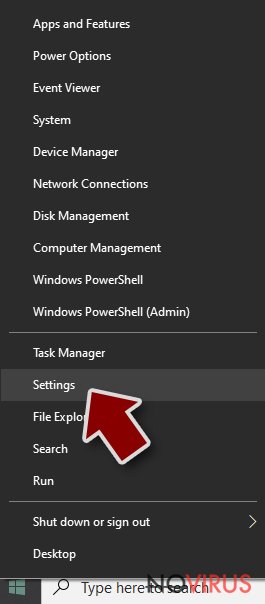
- Scroll down to find Update & Security.
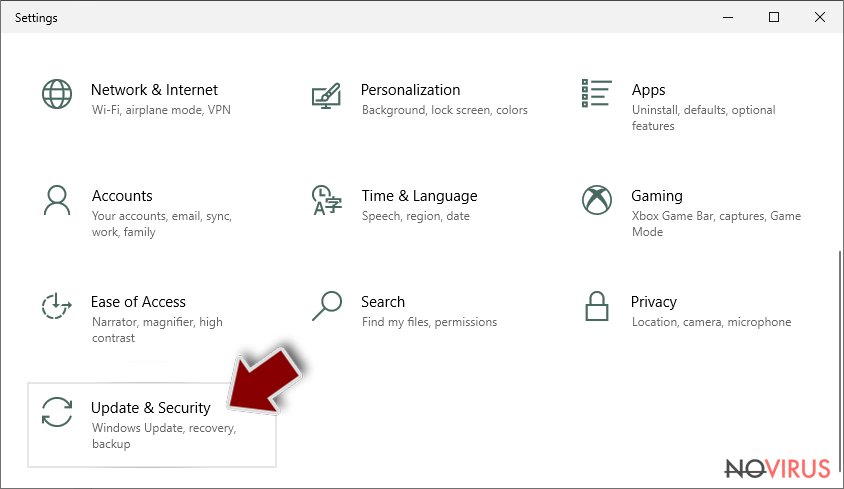
- On the left, pick Recovery.
- Scroll to find Advanced Startup section.
- Click Restart now.
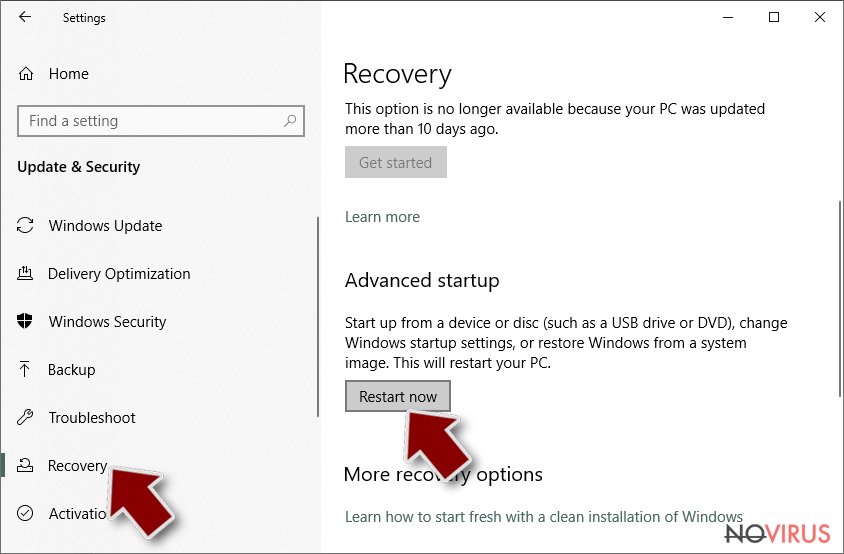
- Choose Troubleshoot.
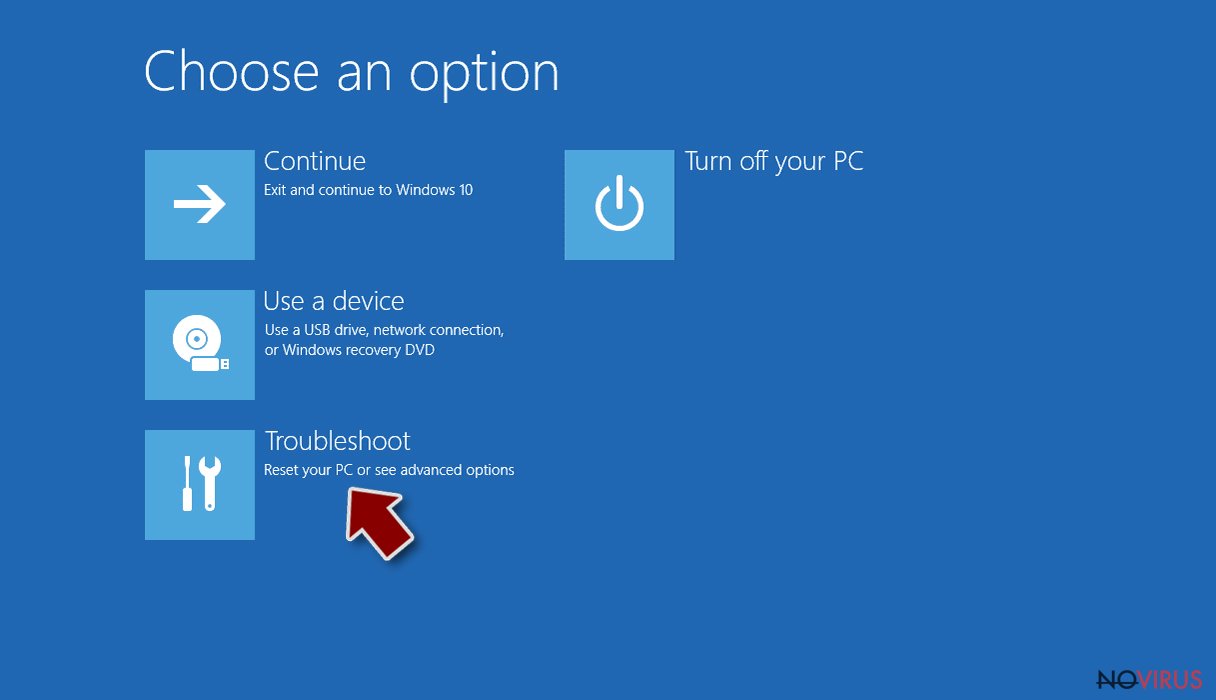
- Go to Advanced options.
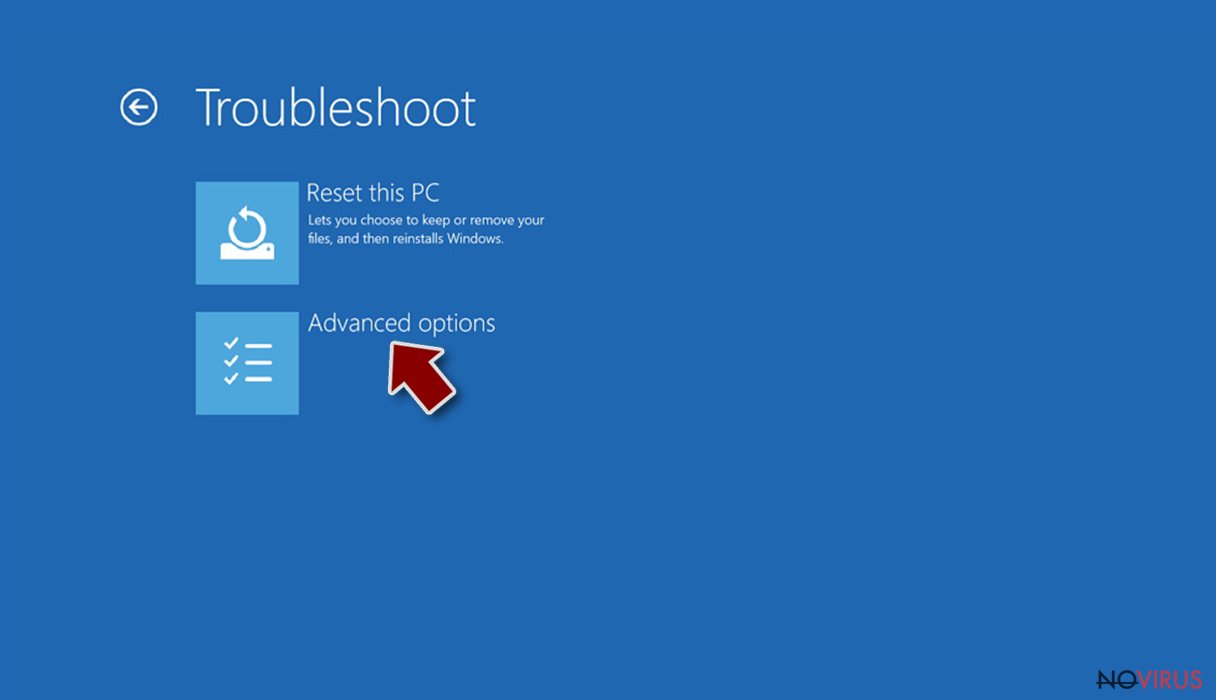
- Select Startup Settings.
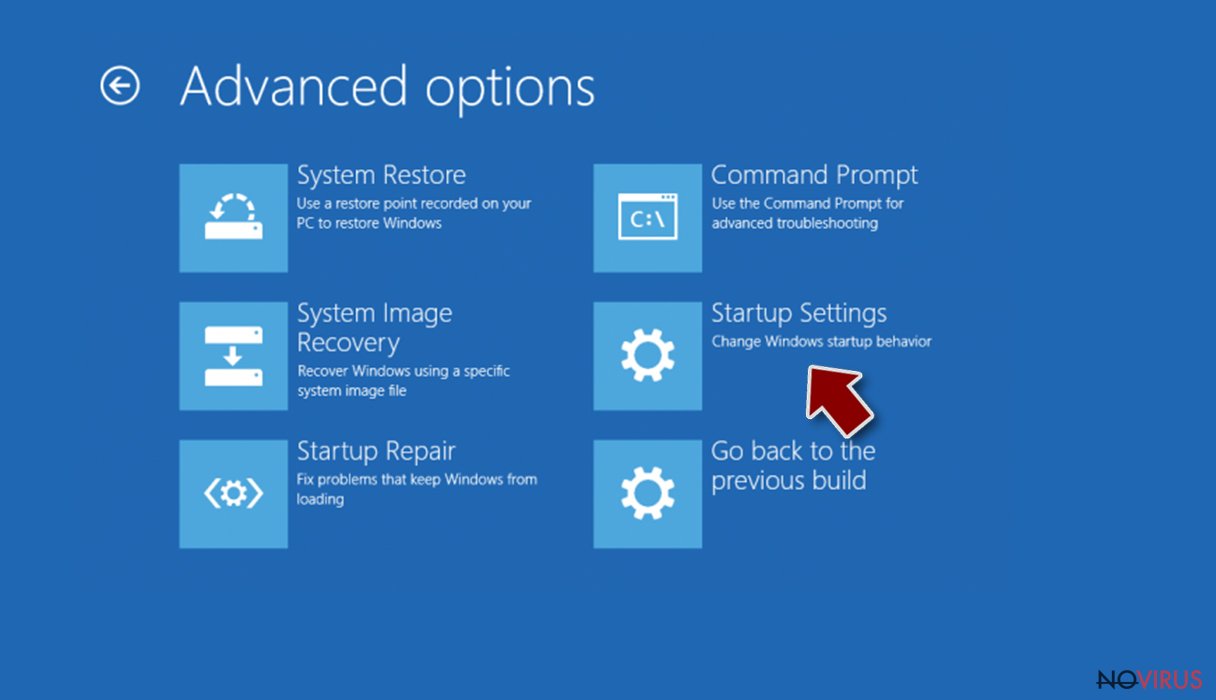
- Press Restart.
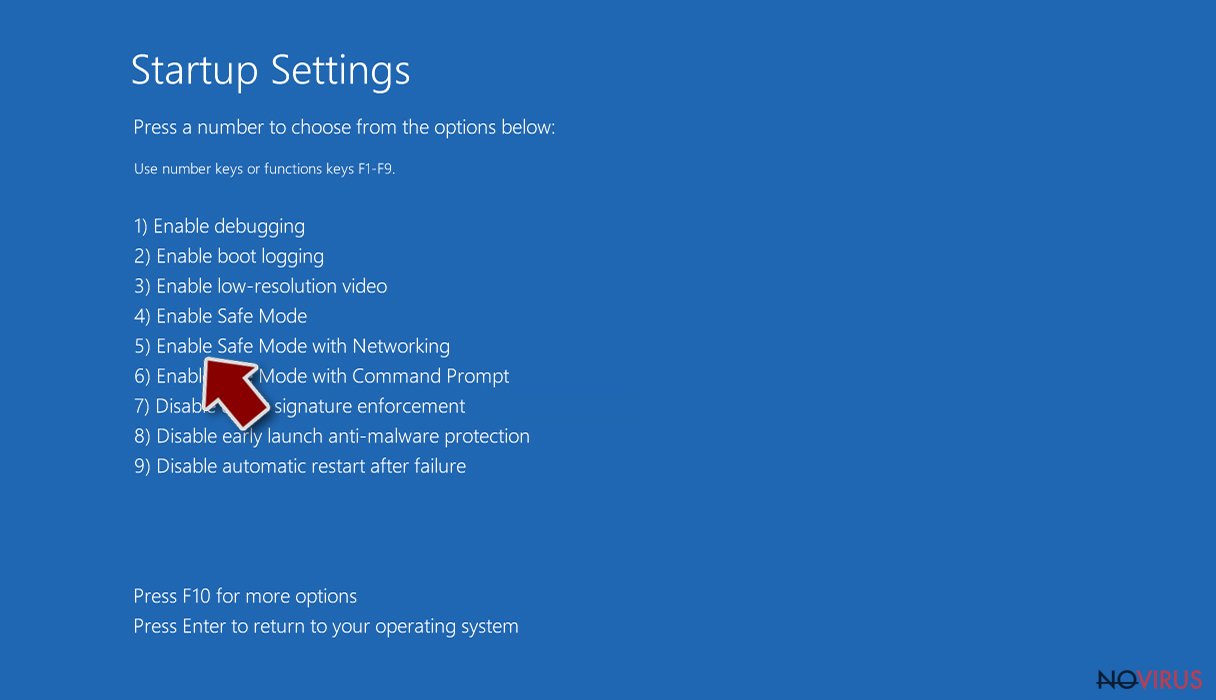
- Choose 5) Enable Safe Mode with Networking.
Step 2. End questionable processes
You can rely on Windows Task Manager that finds all the random processes in the background. When the intruder is triggering any processes, you can shut them down:
- Press Ctrl + Shift + Esc keys to open Windows Task Manager.
- Click on More details.
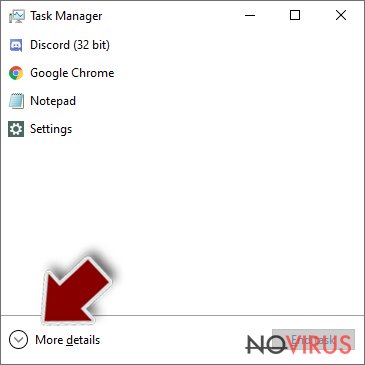
- Scroll down to Background processes.
- Look for anything suspicious.
- Right-click and select Open file location.
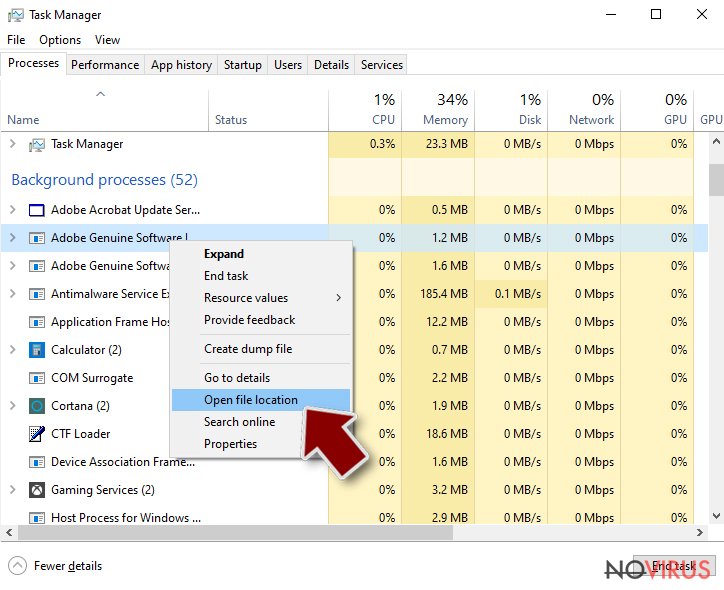
- Go back to the Process tab, right-click and pick End Task.
- Delete the contents of the malicious folder.
Step 3. Check the program in Startup
- Press Ctrl + Shift + Esc on your keyboard again.
- Go to the Startup tab.
- Right-click on the suspicious app and pick Disable.
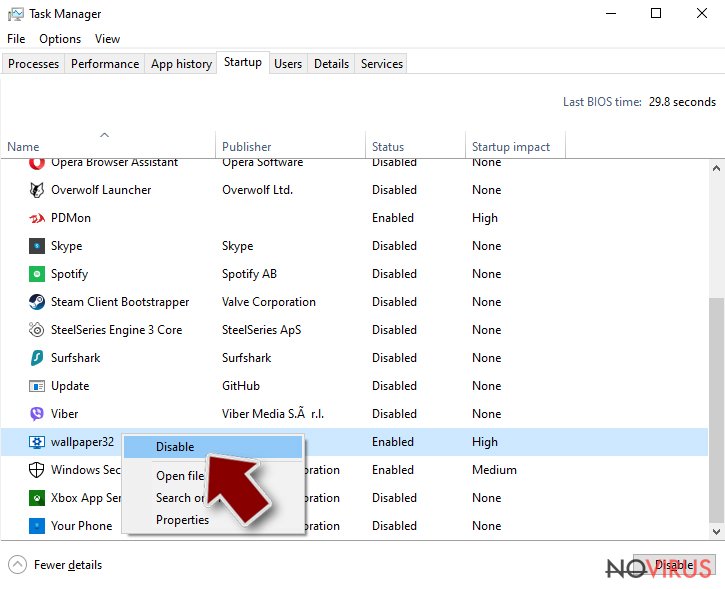
Step 4. Find and eliminate virus files
Data related to the infection can be hidden in various places. Follow the steps and you can find them:
- Type in Disk Cleanup in Windows search and press Enter.
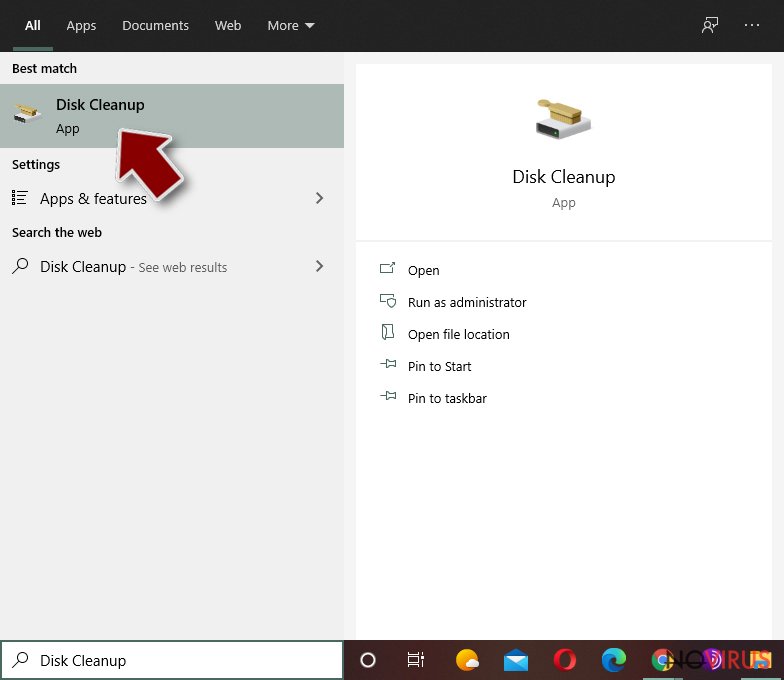
- Select the drive (C: is your main drive by default and is likely to be the one that has malicious files in) you want to clean.
- Scroll through the Files to delete and select the following:
Temporary Internet Files
Downloads
Recycle Bin
Temporary files - Pick Clean up system files.
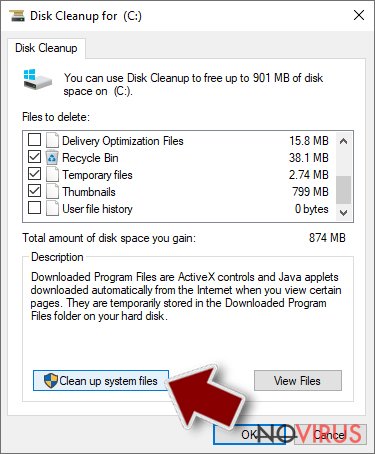
- You can also look for other malicious files hidden in the following folders (type these entries in Windows Search and press Enter):
%AppData%
%LocalAppData%
%ProgramData%
%WinDir%
After you are finished, reboot the PC in normal mode.
Eliminate Mirai using System Restore
-
Step 1: Restart your computer in Safe Mode with Command Prompt
Windows 7 / Vista / XP- Go to Start → Shutdown → Restart → OK.
- As soon as your computer starts, start pressing F8 key repeatedly before the Windows logo shows up.
-
Choose Command Prompt from the list

Windows 10 / Windows 8- Click on the Power button at the Windows login screen, and then press and hold Shift key on your keyboard. Then click Restart.
- Then select Troubleshoot → Advanced options → Startup Settings and click Restart.
-
Once your computer starts, select Enable Safe Mode with Command Prompt from the list of options in Startup Settings.

-
Step 2: Perform a system restore to recover files and settings
-
When the Command Prompt window appears, type in cd restore and press Enter.

-
Then type rstrui.exe and hit Enter..

-
In a new window that shows up, click the Next button and choose a restore point that was created before the infiltration of Mirai and then click on the Next button again.


-
To start system restore, click Yes.

-
When the Command Prompt window appears, type in cd restore and press Enter.
Bonus: Restore your files
Using the tutorial provided above you should be able to eliminate Mirai from the infected device. novirus.uk team has also prepared an in-depth data recovery guide which you will also find above.There are a couple of methods you can apply to recover data encrypted by Mirai:
It is strongly recommended to take precautions and secure your computer from malware attacks. To protect your PC from Mirai and other dangerous viruses, you should install and keep a powerful malware removal tool, for instance, FortectIntego, SpyHunter 5Combo Cleaner or Malwarebytes.
How to prevent from getting malware
Securely connect to your website wherever you are
Sometimes you may need to log in to a content management system or server more often, especially if you are actively working on a blog, website, or different project that needs constant maintenance or that requires frequent content updates or other changes. Avoiding this problem can be easy if you choose a dedicated/fixed IP address. It's a static IP address that only belongs to a specific device and does not change when you are in different locations.
VPN service providers such as Private Internet Access can help you with these settings. This tool can help you control your online reputation and successfully manage your projects wherever you are. It is important to prevent different IP addresses from connecting to your website. With a dedicated/fixed IP address, VPN service, and secure access to a content management system, your project will remain secure.
Reduce the threat of viruses by backing up your data
Due to their own careless behavior, computer users can suffer various losses caused by cyber infections. Viruses can affect the functionality of the software or directly corrupt data on your system by encrypting it. These problems can disrupt the system and cause you to lose personal data permanently. There is no such threat if you have the latest backups, as you can easily recover lost data and get back to work.
It is recommended to update the backups in parallel each time the system is modified. This way, you will be able to access the latest saved data after an unexpected virus attack or system failure. By having the latest copies of important documents and projects, you will avoid serious inconveniences. File backups are especially useful if malware attacks your system unexpectedly. We recommend using the Data Recovery Pro program to restore the system.







